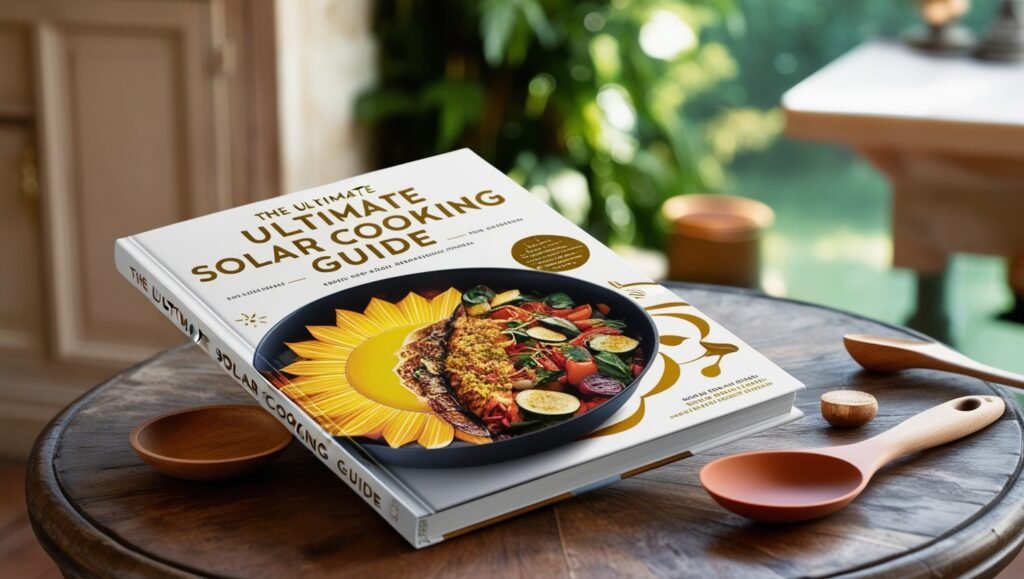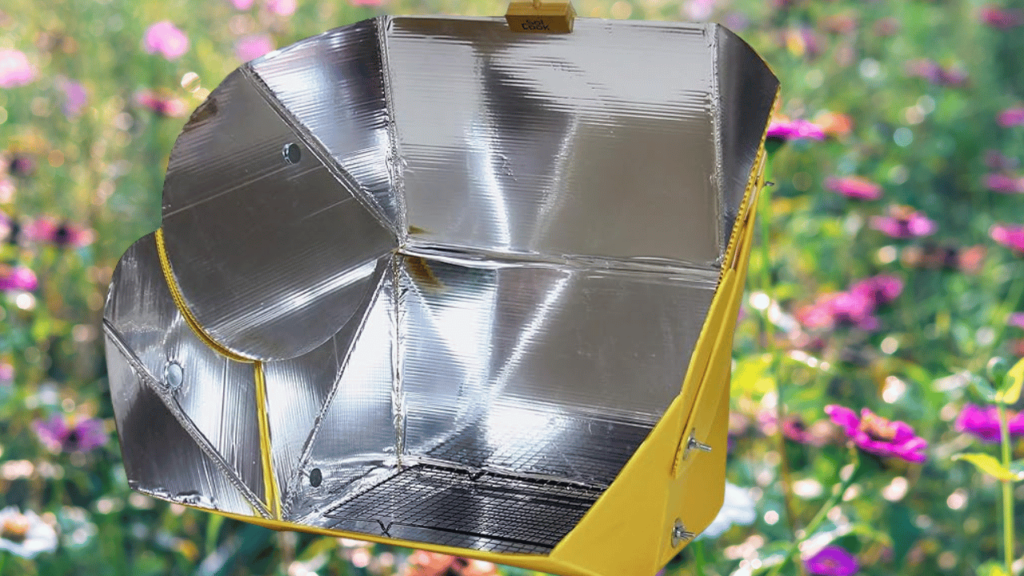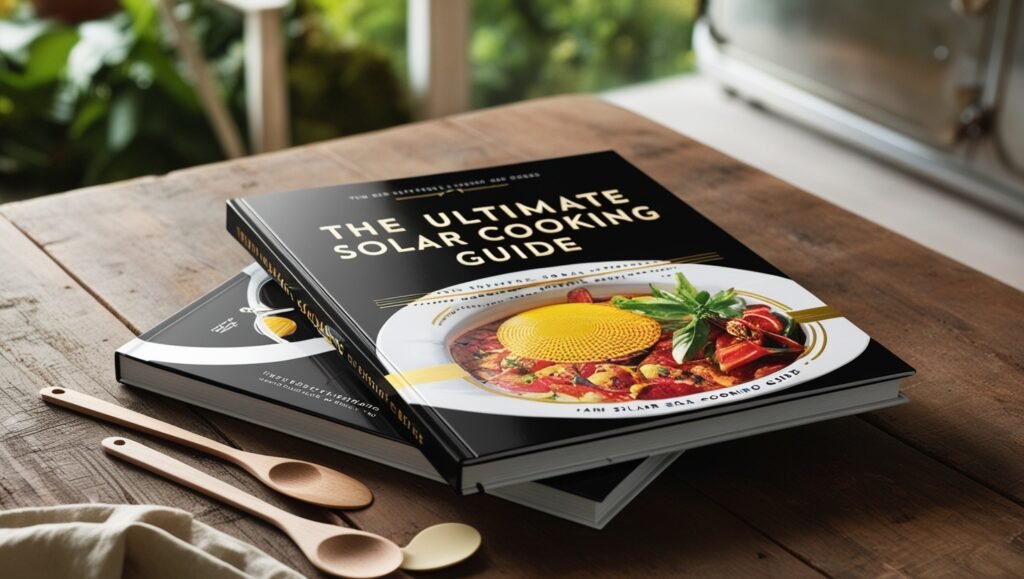
My very first experience with solar cooking is one that I will not forget. It was a disaster, let’s just say burnt hot dogs and a lot of soot. But boy have I grown up over the years! Solar cooking is not just a cool party trick, but rather it is an innovative technique to prepare delightful meals outside while being eco-friendly.
In this guide, I’m gonna spill on everything I’ve learned about, solar cooking tips. From picking the right equipment to fixing the equipment on a cloudy day, we’ll go through it all. So put on your sunscreen and let’s go!
What are the Game-Changing Solar Cooking tips?
There are my top 15 solar cooking tips I used in my day-to-day life, while camping or cooking at my backyard!
1, Choosing the Right Cooker
There are three main types of solar cookers out there:

- Box ovens: These this ovens look like a box with a glass or plastic lid in which helps to reflect in incoming sun rays. They’re great for baking and slow-cooking.

- Panel cookers: These are the lightweight champs of the solar cooking world. They use reflective panels to direct sunlight onto your cooking pot.

Parabolic cookers: These are the big guns – they can reach some seriously high temperatures and are perfect for stir-frying or grilling.
I remember the first time I used a parabolic cooker. I was so excited that I forgot to wear sunglasses. Let’s just say I was seeing spots for the rest of the day. Learn from my mistakes, remember – safety first!
2, Essential Gear for Successful Solar Cooking
When it comes to solar cooking, having the right equipment can make or break your outdoor adventures.
Solar cooking requires the right gear for success. Choose a cooker that fits your needs:
- Backpackers: Lightweight panel cooker
- Car camping/home use: Sturdy box oven
- High-heat cooking: Parabolic cooker (if you can handle the weight)
Avoid using inappropriate cookware like antique dishes. Select equipment suited for solar cooking to enhance your outdoor experience.
There are a few must-have accessories that’ll take your solar cooking game to the next level:
- A good thermometer: Because guessing the temperature is about as reliable as a chocolate teapot.
- Dark, thin-walled pots: These absorb heat better than your ex absorbs drama. Trust me, it makes a difference!
- Oven mitts: Unless you enjoy the sensation of burning your fingertips. (Spoiler: you don’t)
Oh, and here’s a pro tip I wish someone had told me earlier: invest in some good sun-protective gear for yourself too. Nothing ruins a solar cooking session faster than a wicked sunburn.
Remember, folks, you don’t need to break the bank to get started with solar cooking. Start with the basics and build your kit as you go.

3, Selecting the Perfect Cooking Location:
When it comes to solar cooking, finding the perfect spot is like scoring front-row tickets to your favorite band – it can make all the difference.
First things first, you wanna find a place with maximum sun exposure.
But here’s the thing – it’s not just about finding a sunny spot and calling it a day. there’s more to it than that! You gotta think about the sun’s movement throughout the day. That spot that’s bathed in glorious sunshine at 10 AM might be in the shadows by lunchtime.
Pro tip: Use a compass (or your smartphone, if you’re fancy like that) to find south. In the northern hemisphere, that’s where you’ll get the most consistent sunlight throughout the day. It’s like a cheat code for solar cooking!
4, Mastering Temperature Control in Solar Cooking:
First things first, understanding how to regulate heat in different solar cookers is key. Box ovens are like the slow and steady tortoises of the solar cooking world. They heat up gradually and maintain a pretty consistent temperature. Panel cookers are a bit more finicky – they heat up quickly but can lose heat just as fast if the sun decides to play hide and seek.
Now, parabolic cookers? They can reach scorching temperatures in no time, which is great for searing or stir-frying, but it also means you gotta watch ’em like a hawk. I once got distracted while using a parabolic cooker and ended up with a stir-fry that was more ‘charcoal’ than ‘chicken’. Lesson learned!
5, Use Reflectors:
These shiny panels are like magic wands for boosting your cooking temperature. You can adjust them throughout the day to follow the sun’s movement. It’s like giving your solar cooker a superpower boost!
Another pro tip: use dark, thin-walled pots. They absorb heat better than my dog absorbs attention at a family gathering. And don’t forget to cover your pots! It helps retain heat and moisture, which is crucial for even cooking.
And here’s something I wish someone had told me when I started: don’t keep opening your cooker to check on the food! Every time you open it, you’re letting precious heat escape. It’s like opening the oven door every five minutes when you’re baking – a big no-no!
Instead, use a thermometer with a probe that you can read without opening the cooker. It’s like having X-ray vision for your solar oven!

6, Adapting Recipes for Solar Cooking Success:
Alright, solar cooking enthusiasts, let’s talk about one of my favorite topics – adapting recipes for our sun-powered culinary adventures! When I first started solar cooking, I thought I could just throw any old recipe into my solar oven and call it a day. Boy, was I in for a surprise! But don’t worry, I’ve made all the mistakes so you don’t have to.
First things first, converting traditional recipes for solar cooking isn’t hard, but it does require a bit of know-how.
7, Cut Food Smaller
When it comes to solar cooking, size matters. Cutting your ingredients into smaller pieces than you normally would helps them cook more evenly and quickly. I once tried to solar cook a whole chicken – let’s just say we ended up ordering pizza that night
Think of it like this: would you rather wait for one big potato to cook, or enjoy a bunch of crispy, perfectly cooked potato wedges? Yeah, I thought so.
8, Adjusting cooking times and temperatures
Adjusting cooking times and temperatures is where the real magic happens. As a general rule, I add about 30 minutes to the regular cooking time for every hour in a conventional oven. So if a casserole usually takes an hour in your kitchen oven, give it about 1.5 hours in your solar cooker.

9, Keep a solar cooking journal
Note down the recipes you try, the weather conditions, and how long they took to cook. It might sound nerdy, but trust me, future you will thank past you for this valuable info!
I started keeping a journal after a series of solar cooking hits and misses, and it’s been invaluable. It’s helped me fine-tune my techniques, adjust cooking times based on weather conditions, and replicate those accidental culinary masterpieces that sometimes happen when you’re experimenting.
10, Manage Moisture
Solar ovens are like little moisture traps, which is great for keeping things from drying out. But it also means you might need to reduce the amount of liquid in your recipes. I learned this the hard way when my first solar-cooked stew turned out more like soup!
For baked goods, here’s a pro tip: place a small dish of hot water in the cooker about 15 minutes before your food is done. It creates steam that gives your bread or cakes that perfect crust. Trust me, your solar-baked bread will be the talk of the campground!
11, Keep It Safe:
- Now, let’s talk about the elephant in the solar cooking world – food safety. It’s crucial, folks! The danger zone for bacteria growth is between 40°F and 140°F (4°C to 60°C), so we want to get our food through this zone as quickly as possible.
Always use a food thermometer to make sure your dishes reach safe temperatures. For most foods, that’s 165°F (74°C). If you’re cooking meat, especially chicken, give it a head start by partially cooking it in a conventional oven or on a stovetop before finishing it in your solar cooker. It’s not cheating, it’s being smart!
12, Embrace ‘Low and Slow’
- Solar cooking is all about patience, my friends. It’s the tortoise in the “tortoise and the hare” story – slow and steady wins the race. Foods that work well in a slow cooker are usually a good bet for solar cooking.
Soups, stews, and casseroles are your best friends here. They’re forgiving, they don’t mind long cooking times, and they often taste even better when cooked slowly. I once started a solar-cooked chili at breakfast, expecting it to be ready by lunch. We ended up having a very late dinner that day, but boy, was it worth the wait!

13, Multi-Dish Cooking
- Once you’ve mastered the basics, it’s time to level up with multi-dish cooking. Yeah, that’s right, you can cook more than one thing at a time in your solar oven! It’s like playing culinary Tetris, and it’s a game-changer for preparing full meals.
Use stackable pots or create different levels in your solar oven using a wire rack. Foods that need higher heat go on top, while dishes that need longer, slower cooking go on the bottom. I once cooked a full Sunday roast this way – meat on top, veggies in the middle, and a cobbler for dessert on the bottom. My camping buddies were impressed, to say the least!
14, Experiment with Preservation
- Ready to take your solar cooking to the next level? Try your hand at solar canning and dehydrating. It’s like combining the pioneer spirit with eco-friendly technology!
Solar canning is possible, but it requires some extra precautions. You need to make sure your solar oven can maintain a temperature of at least 240°F (116°C) for the duration of the canning process. I use a special canning thermometer to keep track of this.
As for solar dehydrating, it’s perfect for making your own dried fruits, jerky, or even herbs. I use mesh screens in my solar oven to allow air circulation. The low, consistent heat of a solar oven is perfect for dehydrating without cooking the food.

15, Handling Cloudy Days
- Ah, the nemesis of every solar cook – cloudy days. But don’t let a few clouds rain on your solar cooking parade! On partly cloudy days, add about 15 minutes of cooking time for every hour your recipe calls for. And if it’s really overcast, you might need to double your cooking time.
I remember one camping trip where the forecast promised sunshine, but we woke up to a sky full of clouds. Did we give up? Heck no! We adjusted our cooking time, used some reflectors to maximize what little sunlight we had, and ended up with a delicious (if slightly delayed) meal.
Conclusion
Solar cooking isn’t just about preparing meals – it’s about connecting with nature, reducing our environmental impact, and embracing a more sustainable way of living. Plus, there’s something incredibly satisfying about telling your friends, “Oh, this gourmet meal? I cooked it with the sun, no big deal.”
Now it’s your turn to take these solar cooking tips and tricks and make them your own. Experiment, have fun, and don’t be afraid to think outside the box (or the solar oven, in this case). Who knows? You might discover the next big solar cooking technique!
Remember, every solar cook’s journey is unique. What works for me might not work exactly the same for you, and that’s okay. The joy is in the learning and the doing.
So, whether you’re a seasoned solar chef or just starting out, I encourage you to keep exploring, keep experimenting, and keep sharing your solar cooking adventures with others. Who knows? You might just inspire the next generation of sun-powered culinary masters!
And hey, I’d love to hear about your solar cooking experiences! Have you tried any of these techniques? Do you have any tips or tricks of your own to share? Drop a comment below and let’s keep this solar cooking conversation going. After all, the sun’s energy is meant to be shared!
Happy solar cooking, everyone! May your meals be delicious and your skies be sunny!



